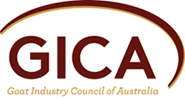In what is considered to be a first for the Australian goatmeat industry, the progeny of nine Boer bucks, nominated by seedstock breeders from across Australia, will be compared for a range of commercially important traits in a trial being conducted near Cootamundra, NSW.
Semen from the nine bucks has recently been artificially inseminated (AI) into a line of approximately 360 Boer does on Colin and Rob Ramsay’s property in the Boer Select Buck Evaluation Trial which is being supported by the MLA Producer Demonstration Site (PDS) Program.
The aim of the trial is to compare a range of Boer goat genetics through the collection of progeny performance data under the most robust of trial designs. This will not only allow superior genetics to be identified but will also enhance the data included in the Sheep Genetics’ KIDPLAN service and improve the level of genetic information that is currently available to breeders.
The performance of each buck will be reported as Estimated Breeding Values (EBVs). EBVs allow the direct comparison of an animal’s genetics, with no environmental influences, like seasonal conditions or whether it is a twin or a single, biasing the results.
Project manager for the trial, Ben Swain of BCS Agribusiness, says that whilst the trial is new in the goatmeat industry, the concept has been tried and tested in other livestock industries around the world.
“Progeny testing programs have been used extensively in most livestock industries to identify superior genetics, compare bloodlines and create linkage”, Ben said. “By comparing progeny that are managed identically, high quality data will be created which will add value to those records collected by individual breeders and submitted to KIDPLAN.”
While the trial will provide an interesting insight into the relative genetic value of each of the nine participating bucks, information that will no doubt be of interest to seedstock breeders and commercial producers, there is also another very important objective of the trial, as Ben explains.
“The trial is designed to provide robust genetic linkage between the studs represented in order for them to accurately benchmark against each other in the future”, Ben said. “As members of Sheep Genetics’ KIDPLAN service, the entrants will be better able to compare their herd’s own performance against others as a result of the genetic linkage established by this trial.
“This will lead to faster rates of genetic gain and ultimately more profitable commercial goat enterprises through the use of these improved genetics.”
Kidding will occur in September when the measurement of traits, beginning with birth weight, will commence. Over subsequent months, weaning, post weaning and yearling weights will also be recorded, along with worm egg counts and carcase scanning, with the trial expected to run for approximately 12 months. A full report on the performance of each buck will be available at the end of the trial.
